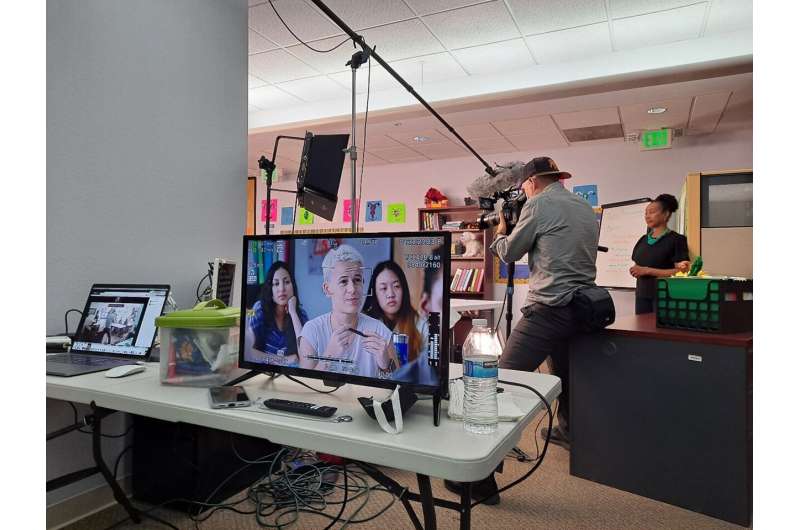How can sex education training videos be more inclusive?

Sexuality education often fails LGBTQIA2S+ (Lesbian, Gay, Bisexual, Transgender, Queer, Intersex, Asexual, Two-Spirit with the + indicating other identities not listed) students, few of whom report ever receiving inclusive education at school. Yet sexuality education classrooms have the potential to be safe, affirming, and inclusive spaces if educators receive training to develop inclusion skills.
Enter SkillFlix for Educators, a streaming video training platform created to improve educators' skills in facilitating sexuality education to youth, regardless of the curriculum. Developed by social science R&D firm dfusion inc. (Scotts Valley, CA), Skillflix for Educators offers short training videos filmed on a simulated classroom set using professional actors and film crew.
In a newly published article for Health Promotion Practice, the dfusion research team notes that the goal of inclusivity informed all aspects of a video shoot, from drafting of scripts, scenes and characters to the actors hired and the props used on set. The article explores several lessons learned about inclusivity during their formative research and video production efforts. Important insights came from both LGBTQIA2S+ expert advisors to the project as well as LGBTQIA2S+ actors and production staff hired for the videos. Three key lessons are described:
- Avoid siloing the inclusion. Project advisors made it clear that offering a single module on LGBTQIA2S+ inclusivity was insufficient. As one advised, "We need to think of inclusiveness across skills," woven into the fabric of the classroom, and not silo LGBTQIA2S+ issues to a single lesson or topic.
- Use inclusive design strategies. To model inclusivity in the videos, the project team needed to not only create multiple LGBTQIA2S+ storylines and characters, but additionally, to cast LGBTQIA2S+ actors who brought their insights to the production, offering real time feedback on things like tone and dialogue. Several actors expressed excitement over playing a role that matched their identity. One actor explained, "As a young nonbinary demisexual, shoots and programs like these are very meaningful to me."
- Create welcoming/inclusive workspaces. The project team noted that "the skills we hoped to teach educators became the skills we needed to enact on set." Staff dedicated time to comprehensive introductions of actors and crew, sharing names, pronouns, responding to icebreaker questions, and reviewing expectations of behavior. Ensuring safe spaces and privacy options for changing/ breaks, having staff wear tags identifying their pronouns, and immediately responding to misgendering and microaggressions all contributed to an inclusive production environment.
More information: Mia Barrett et al, Using LGBTQIA2S+ Inclusive Practices When Filming Sex Education Training Videos: Lessons Learned, Health Promotion Practice (2022). DOI: 10.1177/15248399221139300
Provided by Dfusion (United States)





















